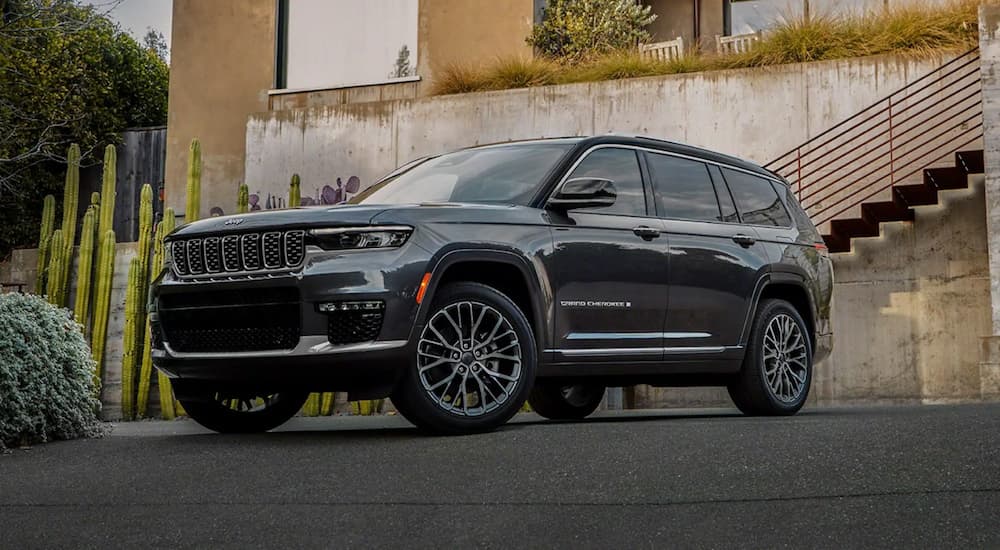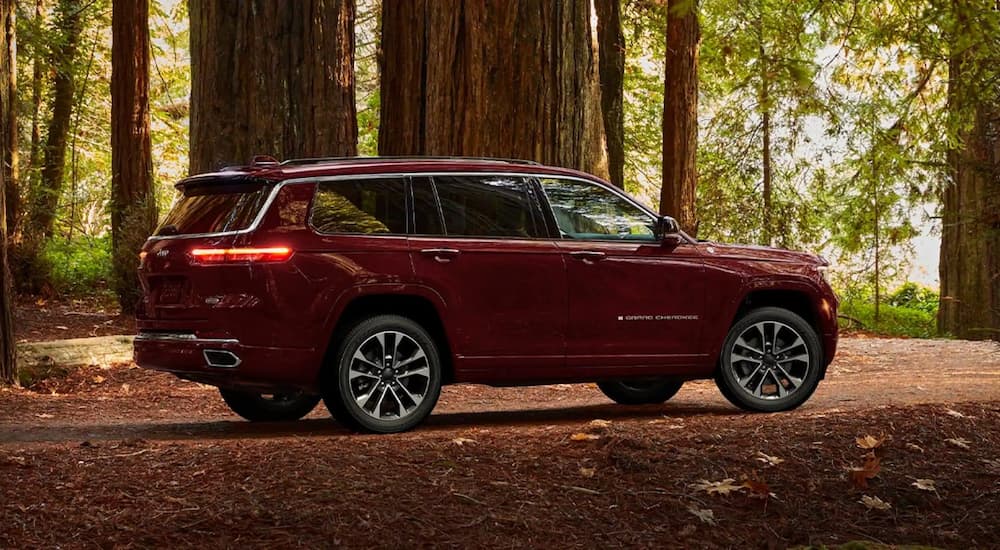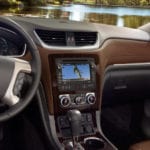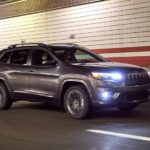When we hear it wasn’t a fair fight, we tend to feel sorry for the underdog. We assume the aggressor was bad or a bully. That narrative is half right with the 2021 Jeep Grand Cherokee L vs 2021 Toyota Highlander – it most definitely wasn’t a fair fight. But in this battle, the good guy won fair and square. How? Jeep got the redesign timing just right.
Virtually no other category is as competitive as the midsize SUV segment. We often see flagship nameplates occupying a spot in the category, and it’s not uncommon for them to undergo frequent “refreshes” or mid-cycle design tweaks to keep buyers interested; and once every five years or so, automakers will usually perform a complete redesign.
What’s the difference between a refresh and a redesign, and how do manufacturers determine the timing of both? In a word, it’s complicated. Full redesigns are riskier, especially if the vehicle is a best seller, but most vehicles don’t age well, so putting it off for too long could be costly. To illustrate this process, we take a closer look at the Grand Cherokee, its life cycle to date, and Jeep’s bold decision to wait a decade to redesign it.

The Grand Cherokee: Where it All Started
Currently in its fifth generation (it’s undergone four redesigns in its lifetime), the Grand Cherokee got its start in the 1993 model year. From day one, this premium SUV had an air of differentness that caused buyers to do a double-take. With its unique combination of mild road manners, available luxury trims, and gritty trail-ready off-roading capability, the Grand Cherokee handily gobbled up market share from the competition.
At the time of its launch, innovator Lee Iacocca was at the helm, having been brought on a decade earlier to steer Chrysler, Jeep’s parent company, out of impending bankruptcy. As part of the company’s turnaround, in 1987, he had brokered the deal to acquire Jeep. It was during his tenure that the Grand Cherokee first hit dealers.
The first-generation Grand Cherokee spanned six model years and taught Jeep that buyers preferred it loaded with premium features. Although the early models offered value-priced trims with manual transmissions and hand-crank windows, Jeep progressively refined the Grand Cherokee trim lineup to focus on upscale buyers.
In 1999, Jeep launched generation two, the first round of Grand Cherokees to receive larger V8 motors and the company’s iconic Quadra-Drive 4WD system. Sales were brisk, but more changes loomed on the horizon. The third-generation Grand Cherokee launched for the 2005 model year, bringing with it an even more powerful 5.7-liter V8 HEMI engine and a quieter, more luxurious cabin.
The Longest Generation: If It Ain’t Broke, Don’t Fix It
By the time Jeep launched the fourth-generation Grand Cherokee in 2010, it was among the most popular SUVs in the segment. This round of changes represented the most substantial overhaul to date, including extensive design refinements. In essence, it was a whole new Grand Cherokee.
Jeep gambled big that customers would welcome this newest Grand Cherokee version. As it turned out, even Jeep may not have realized how big an impact this generation would ultimately have on the segment and the industry. The fourth-generation Grand Cherokee received over 30 awards, the most of any vehicle in automotive history.
The Grand Cherokee’s design earned so many accolades – and sales – that Jeep left it virtually untouched for a full decade, a timeline previously unheard of for best-selling models. Interestingly, the company scrapped plans for a 2017 redesign after experiencing a 20% bump in sales in the 2015 model year.
As the most profitable vehicle in Jeep’s portfolio, the timing needed to be perfect. Executives recognized that buyers were still opting-in on the vehicle’s aging architecture, which led to the decision to push the timeline out. Frustrated competitors lamented the Grand Cherokee’s timeless appeal while simultaneously dreading what loomed on the horizon: an even better iteration.
Finally: The 2021 Grand Cherokee Redesign
Perhaps the most interesting aspect of Jeep’s eventual 2021 model year redesign is that company executives were on record confirming that a redesign would happen no later than 2019. However, between 2009 and 2019, Jeep’s annual sales surged from 300,000 to 1.5 million units, an astronomical increase credited mainly to the Grand Cherokee.
With robust sales and a seemingly evergreen design, the fourth-generation Grand Cherokee endured for another model year, coming through a precipitous industry-wide sales drop in 2020 virtually unscathed. After teasing the redesigned 2021 model, Jeep finally launched details in the early summer months.
By far the biggest headline is Jeep’s new Grand Cherokee L, offering the first-ever Grand Cherokee designed with seating for up to 8 passengers. What baffles automotive experts is how Jeep managed to get away with not having a longer wheelbase option sooner. Since the new 2021 lineup includes both two-row and three-row Grand Cherokee models, insiders believe Jeep’s market share will increase even more.
Starting at $38,635, the Grand Cherokee L still features Jeep’s signature 7-slot grille and echoes of previous generations. However, this newest version is even more refined, with a sloped roofline, sleek flush-mounted LED exterior lighting, and ultra-premium features like a 19-speaker McIntosh audio system. In contrast to more mundane competitors like the 2021 Toyota Highlander, the Grand Cherokee is slotted specifically on the premium end of the category.
For instance, the Highlander’s 2020 redesign was aimed at a broader demographic. Toyota hopes to capture a huge spectrum of buyers, from young adventure seekers to upscale families looking for luxury. It’s a tall order because buyers on both ends of the spectrum tend to opt-out if perception favors one extreme. If wealthy suburb dwellers perceive the Highlander as a starter SUV for young buyers, it will lose its cache. Conversely, if young buyers peg it as a favorite among suburban moms, they’ll likely buy something else.
Timing is Everything, Unless It’s a Jeep
There’s an unwritten rule in the auto industry: if sales are strong, don’t make big changes. Instead, perform minor tweaks, like adding new exterior paint colors or a special equipment package, and create lots of hype as the calendar flips to the new model year. It’s a formula that works, but in-the-know buyers recognize that a refresh is playing it safe. The other major rule is, know your buyer.
The Grand Cherokee is a master class on timing. One could argue that delaying the fifth-gen redesign was a conservative decision. Most nameplates, like the Highlander, generationally transition in 5-7 year cycles. That the Grand Cherokee made it a decade without any substantial changes is nothing short of miraculous. The brand’s appeal has also broadened without diluting its appeal – it’s not uncommon to see young adventurers tearing it up on the trail in first-gen models.
This newest Grand Cherokee lineup includes a series of firsts for America’s favorite adventure brand, including the family-friendly 7 or 8-passenger seating. Even with all the design changes, Jeep was careful to stick with the same winning formula: infusing class-leading off-road capabilities with a plethora of luxury finishes that rival vehicles costing tens of thousands more.
Buyers choose the Grand Cherokee for its dichotomous capabilities. Even if a weekend of mud-soaked trail riding never makes it on the agenda, Jeep owners like knowing it’s possible. The appeal is its ruggedness, and while it may not be terribly adventurous to spend time in the carpool line or the big box home store, somehow, even mundane errands are cooler behind the wheel of a Jeep.





